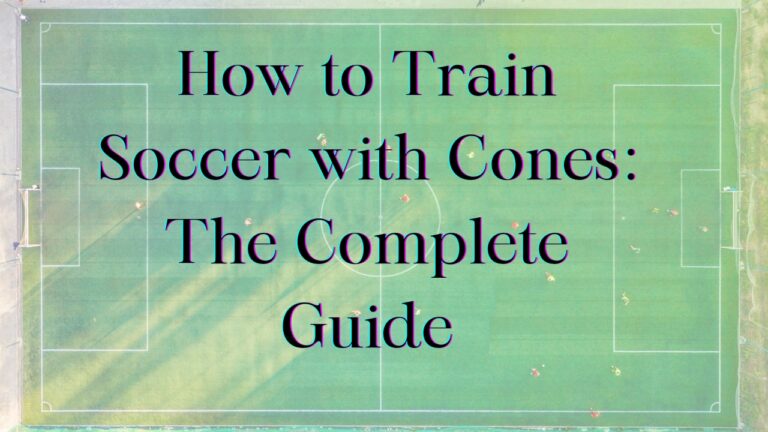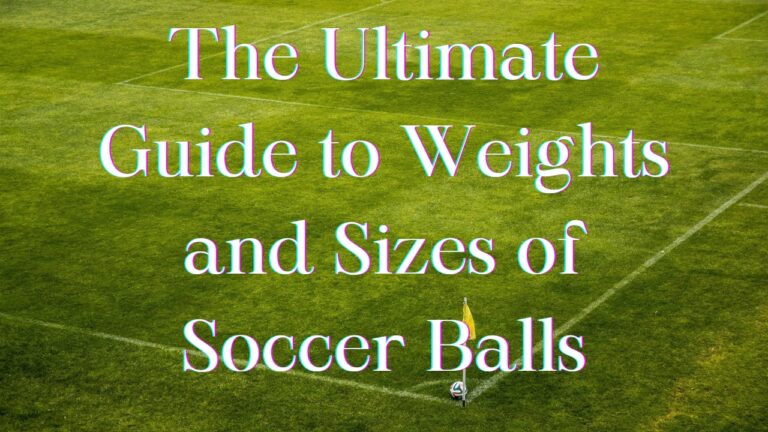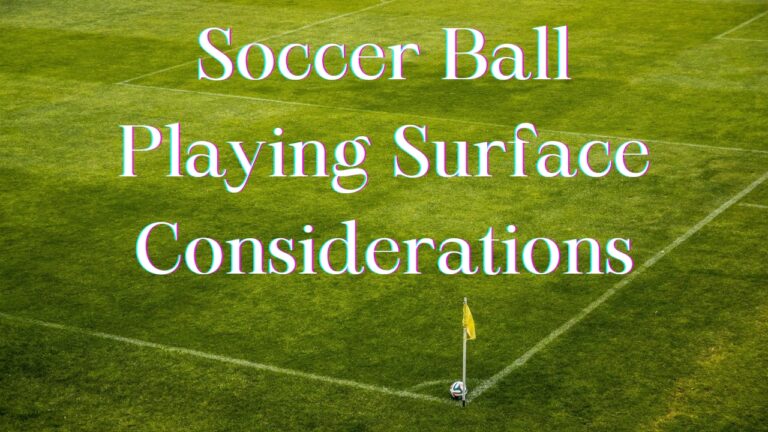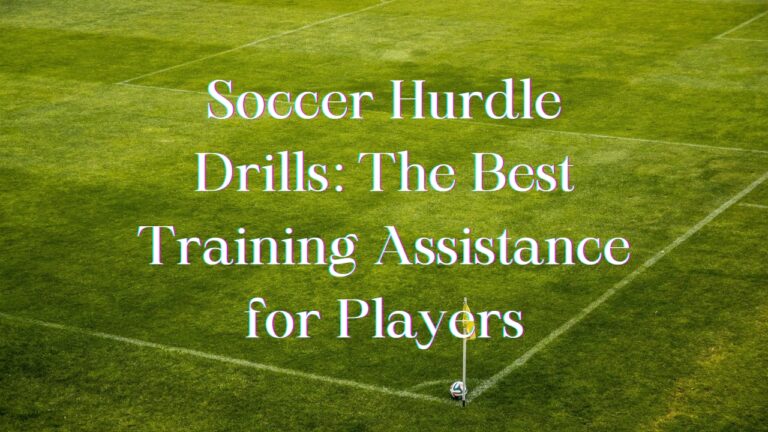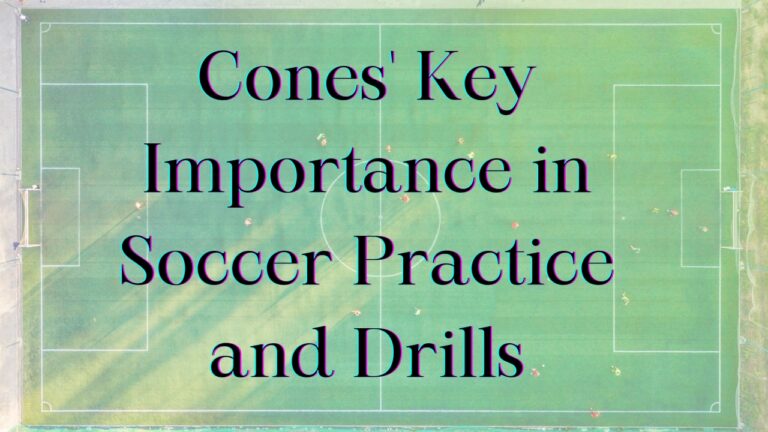Soccer hurdles are an essential piece of equipment for players of all ages and skill levels who want to take their game to the next level. These versatile training tools provide a wide range of benefits that can help improve footwork, agility, speed, power, coordination, mental focus, and more.
Incorporating hurdles into your soccer training routine is one of the best ways to develop the quick feet, explosive power, and on-field decision-making skills that separate good players from great ones. In this article, we’ll explore the top reasons why soccer hurdles should be a staple in every coach and player’s training arsenal.
What are Soccer Hurdles?
Soccer hurdles, also known as agility hurdles, mini hurdles, or speed hurdles, are short barriers that players run over, around, and through as part of various speed, agility, and plyometric drills. They typically range from 6-12 inches in height and are designed to be lightweight and adjustable.
The purpose of using hurdles is to force the body to be more explosive and reactive through multi-directional movements that mimic game situations. By challenging stability, coordination, and body control in a safe environment, hurdles help build the functional strength, power, and agility needed to excel on the soccer field.
Improving Footwork and Agility
One of the primary benefits of incorporating soccer hurdles into training is the development of quick feet and agile movement skills. Hurdle drills emphasize short, choppy steps, directional changes, and deceleration/acceleration – all key components of elite footwork.
Some examples of hurdle exercises for footwork include:
- Quick steps over a line of hurdles (focus on knee lift and fast foot contacts)
- Lateral shuffles side-to-side through hurdles
- Forward/backward running with directional changes around hurdles
- Zig-zag or serpentine patterns weaving in and out of hurdles
The varied movements and constant adjustments required when navigating hurdles train reactive agility. Players learn to be light on their feet, maintain body control, and change direction efficiently. These skills translate directly to on-field performance, helping players beat defenders 1v1 and evade pressure more effectively.
Building Speed and Explosive Power
In addition to footwork, hurdle training is extremely effective for developing speed, acceleration, and overall explosiveness. Exercises that have players jumping forcefully over hurdles, driving knees up powerfully, and sprinting maximally between hurdles tax the muscles in a way that builds athletic strength and power.
Some speed and power hurdle drills include:
- Double leg hurdle hops – focus on height and quickness
- Single-leg hurdle jump variations (straight, lateral, rotational)
- Short sprint accelerations between grouped hurdles
- Long hurdle bounds emphasizing maximal extension
- Resisted sled sprints weaving through spaced hurdles
The rapid force production and triple extension required to effectively clear hurdles help enhance the rate of force development (RFD).
Enhancing Coordination and Body Control
Navigating around, over, and through hurdles requires a high degree of coordination, balance, and overall body control. The varied movements and constant adjustments challenge stability and motor control in ways that help players move more fluidly and efficiently on the pitch.
Some key benefits of using hurdles for coordination include:
- Training multi-planar movement competency
- Promoting joint stability through control of dynamic valgus
- Integrating the kinetic chain for full body mobility
- Enhancing spatial awareness and proprioception
- Improving deceleration and landing mechanics
Hurdle drills that emphasize control, posture, and technique reinforce proper movement patterns. For example, focusing on soft/quiet landings, maintaining a neutral spine and knee alignment, and keeping the chest upright when changing direction. This type of training helps groove proficient, injury-resistant movement while under physical stress.
Overall, the varied hurdle drills help players move more athletically by teaching them to be spatially aware, control their body through complex ranges of motion, and fluidly transition between movements. This well-rounded coordination pays big dividends on the field.
Developing Mental Focus and Reaction Time
In addition to the physical benefits, hurdle training provides cognitive boosts as well. The varied movements require quick decision-making, processing visual information on the fly, and reacting at the moment. This helps sharpen focus, concentration, and overall processing speed.
Some ways hurdles to tax cognitive function include:
- Forcing quick directional choices in maximal sprints
- Challenging divided attention by adding decision-making components
- Promoting emotional control under physical duress
Injury Prevention Through Functional Training
While soccer hurdles provide athletic performance benefits, they also play an important role in reducing injuries. Hurdles allow players to build strength and robustness in dynamic, multi-planar movements that mimic sports actions. This type of training strengthens stabilizing muscles and connective tissues in functional patterns.
Some of the injury prevention benefits of hurdle training include:
- Developing eccentric strength to absorb force safely
- Training deceleration and change of direction mechanics
- Targeting often neglected muscle groups like lateral hip stabilizers
- Increasing ankle and knee stability through multi-directional loading
- Providing a low-impact method for developing power and strength
Compared to traditional strength training in controlled postures, hurdles train the body to produce, absorb, and safely transfer force through complex, athletic postures. This more closely replicates sports actions and helps “bulletproof” the body against the rigors of soccer.
By enhancing movement quality, stability, and strength in dynamic actions, hurdle training helps players become more durable and resilient. This lowers the risk of common soccer injuries like ACL tears, ankle sprains, hamstring strains, and more.
Versatility for All Skill Levels
Another advantage of soccer hurdles is their versatility and ability to be customized for athletes across a wide range of ages and abilities. With simple adjustments to hurdle height, spacing, arrangement, and technique emphasis – the challenge can be scaled for everyone.
Some ways hurdles can be adapted include:
- Lowering heights for young players still developing coordination
- Increasing hurdle spacing for maximal sprinting with advanced athletes
- Using higher hurdles to place more emphasis on technique for elite players
- Grouping hurdles close together to focus on foot speed and agility for all levels
This versatility allows for progressive programming as players develop new skills over time. From beginners learning basic movements to pros fine-tuning high-level abilities – hurdles can be an effective training tool at any stage of the player development pathway.
Coaches can get creative by mixing up hurdle arrangements, combining them with other equipment, adding decision-making factors, and more. This variety keeps training engaging and purposeful whether working with youth, high school, collegiate, or professional players.
Start Incorporating Hurdles Today
As you can see, soccer hurdles provide a multitude of athletic performance and injury prevention benefits that make them an invaluable training tool. From improving footwork and speed to enhancing coordination and cognitive focus – hurdles help develop the complete soccer athlete.
The versatility of hurdle training also allows for progressive programming that evolves with players over time. Simple adjustments can provide an optimal challenge at every stage of development, whether just starting or competing at an elite level.
So what are you waiting for? Invest in a set of quality soccer hurdles and start reaping the rewards today. Get creative with hurdle arrangements and exercise variations. Your speed, agility, power, focus, and durability are sure to improve in no time.
With so many clear upsides and the ability to customize workouts, hurdles should be a cornerstone of any serious soccer training program. Commit to regular hurdle work and take your game to new heights. Your future self will thank you for the exciting gains in performance and reduced risk of injury.
Related Post: Guide to Buying Soccer Hurdles: Key Considerations
Author


